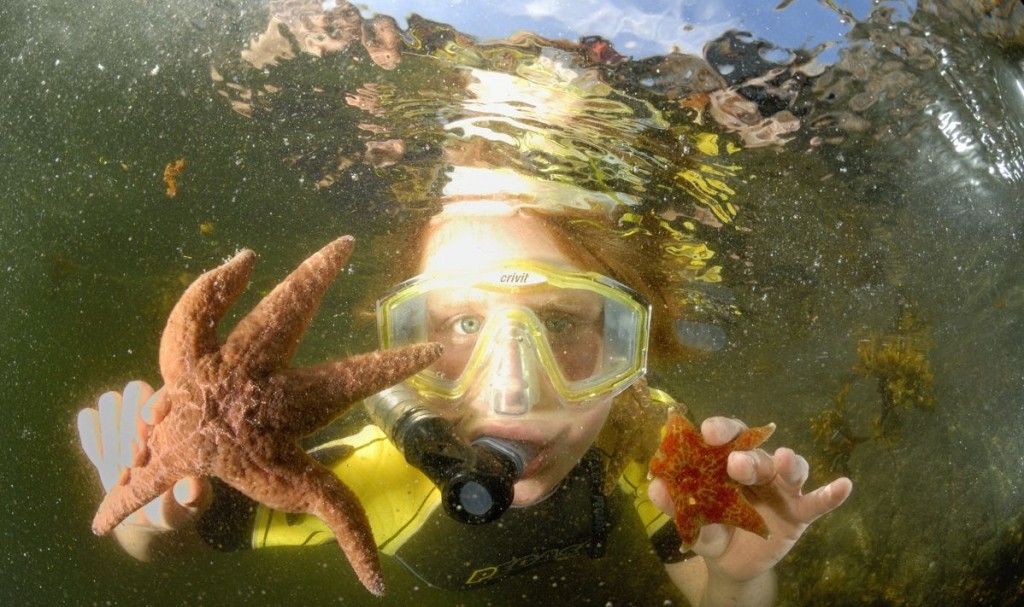
Nightly greetings,
We are currently sitting on the shore of the Pacific and admiring the fascinating glow of the sea. Only under very specific conditions does bioluminescence occur in protozoa. Every time the water moves, they start to lighten up. Yesterday was no exception. Still unprepared, everyone had already slipped into their sleeping bags when Kathi and Kai ran through the camp to wake us up again. Eventually, two brave people found each other and jumped into the icy water. This midnight experience was absolutely worth the cold. Even small movements with the fingertips in the water caused tiny green-white glowing dots to appear - as if someone had sprinkled sequins into the sea. Our photographers captured the action with some long exposure shots.
The next morning began with drum beats from Hwiemtum and a Happy Birthday song on Hulqeminum for Ronja. Of course, cake is a must for a 15th birthday. The projects were pushed forward in the morning. "Holy Crab" was busy collecting crabs while we interviewed Harro. We learned a lot about the Cowichan culture, for example the cycle of life or the "Sacred Circle", in which all the elements of life are represented. Tim the marine biologist, Alisa and Magan joined us for lunch. Tim and our two photographers then went diving to introduce us to various marine organisms in the truest sense of the word, such as sea urchins. As a young boy, Tim's grandfather could easily collect three bags of them in one morning. Because of this and the other abundant species such as salmon in the water and deer in the forests, this area was the breadbasket of the Cowichan. But when Tim started diving in the nineties, there was not a single green sea urchin left from Croften to Cowichan Valley. On Bariol Island and opposite, 5000 seeds were sown to reintroduce the green urchins. In the first few years there was nothing to be seen, but they are now reappearing even on our side of the Strait. Tim brought us several specimens of red sea urchins and a green one, which we immediately tasted. The edible part is the eggs inside - they have a milder taste than caviar and are used as a dessert, especially by the elders.
The herring fared similarly to the sea urchins, once teeming with herring fry. Pollution caused them to disappear and with them the food source for many predators. But then the industry, looking for new fishing grounds, remembered an old Cowichan trick. The trick consisted of placing trees or branches in the water shortly before the spawning season to create an artificial spawning site if the herring's egg-laying sites were known. Originally, this trick was used to make it easier to reach the eggs, and they also absorbed the taste of the trees. In order to reintroduce the herring, trees were placed in the spawning areas where there were still herring and these were then brought here together with the eggs, making them native again.
For dinner we had soups, one with (lots of) curry and the other with coconut milk and fish, which Kai had managed to get to bite into in the morning. With the cooked hermit crabs and the large crab, it was a tasty and successful end to the day.
Egon, Team "Canadian Cooks"
More reports and pictures from the photographer team on www.reinis-blue-box.blogspot.de and http://www.samifayed.de/blog.
www.facebook.com/wildernessinternational
Our coordinates today:
N 48.770223
W 123.577926























